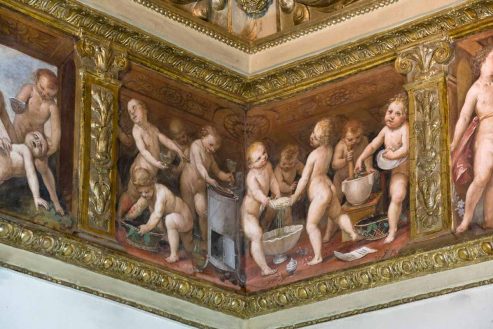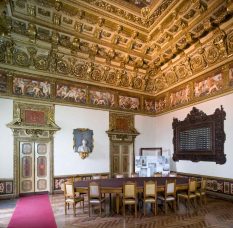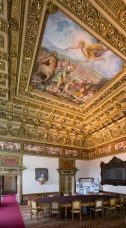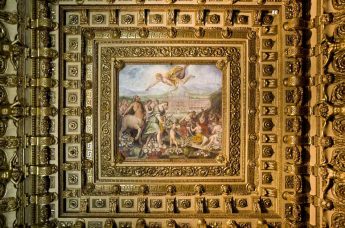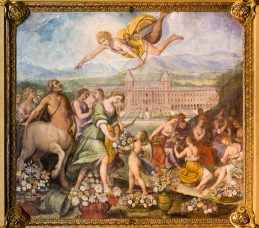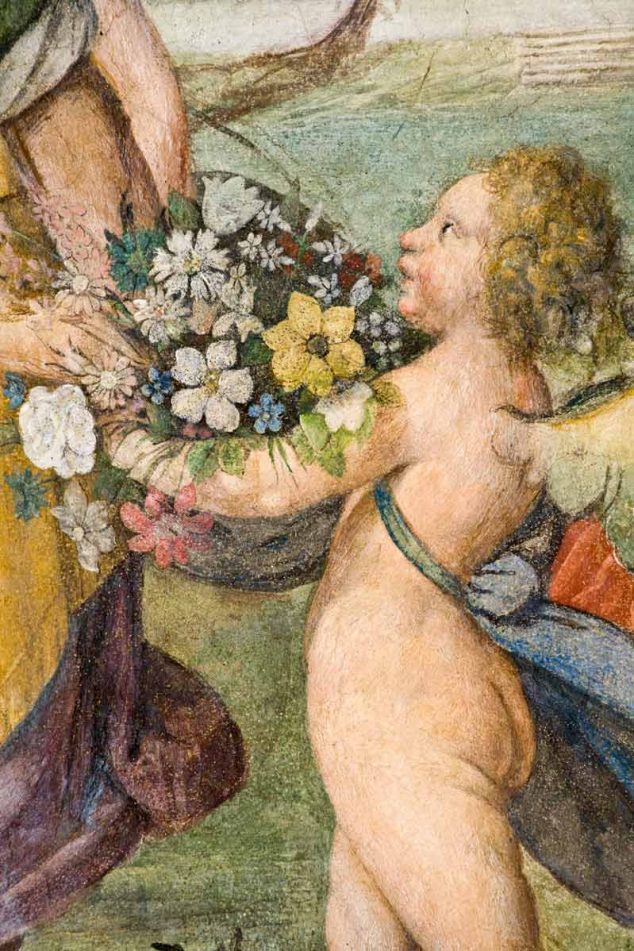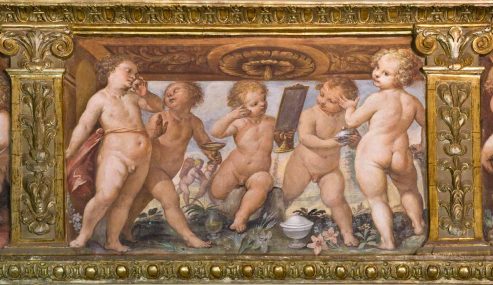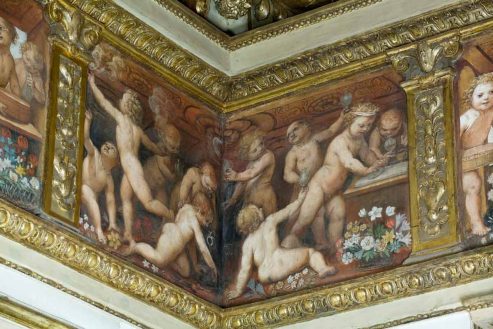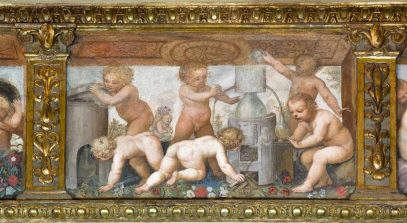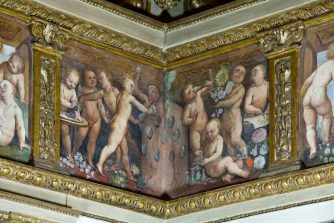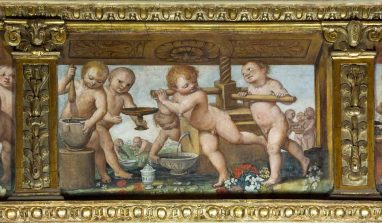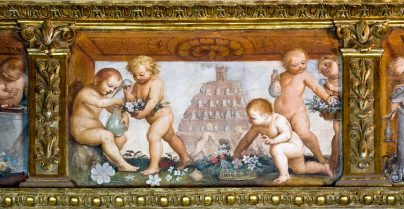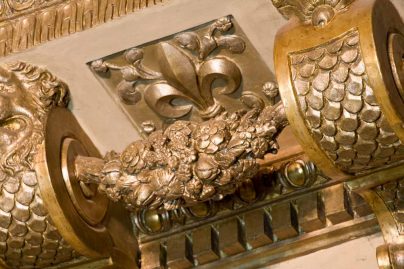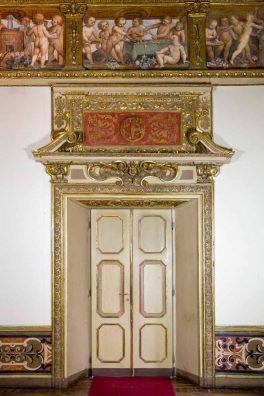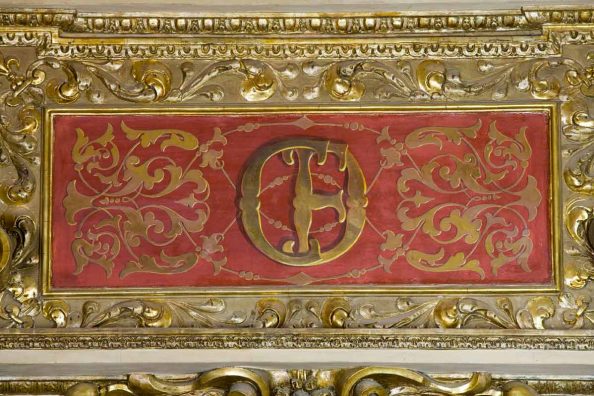Isidoro Bianchi and his team were responsible for the decoration of this room, which was also the first to be completed.
The decoration of the ceiling is noble and precious, with an elaborate architectonic sequence of frames which create perspective bands leading to the central fresco panel. These bands are filled whith all the ornamental elements later utilized in the other rooms, but in a less rigorous architectural context. The ceiling has been conceived inspired by coved wooden ceiling. The decorativ layout is in five concentric square bands. The first band was filled whith acanthus scrolls, putto and leonine heads. Then there were four other borders, which diminished in size as they neared the centre: the first was supported by garlands and corbels framing monogrammes and Cristina of France’s Fleur-de-lis; the second also had acanthus leaves shaped corbels, interspaced with rose shaped decoration; the third was a meandering frieze, rithmical divided by putto heads with garlands of flowers, and finally the fourth frieze had exclusively acanthus scrolls. The friezes were brought to life by Bianchi’s brilliant use of the corners – he put smiling putti heads into shells which also succeeded in giving the ceiling new height. Also inspired by this dinamic solution is the frieze underneath, rithmical divided by short thin pilasters and Fleur-de-lis capitals. Being just above the top row of putti, the frieze prefigure it and cleverly avoided it dominating the corner.
This left space for the fresco panel on the two walls. There exist a similar relationship between the ceiling and the walls beneath as regards the decorative themes. In the painted frieze on the walls smiling putti gathering flowers to be distilled into precious essences and adombrate Cristina of France herself. For in the central panel, Cristina, dressed like the goddess Flora, is depicted picking and giving away flowers on a stage with, as the backdrop, the Valentino and its planned, but never realised gardens, facing the Po. In the fresco near Cristina dressed like Flora-Spring and giving new life to the Valentino, is the centaur Chirone – Achille’s tutor in ancient mithology and which probably was supposed to represent the necessity and intention to educate the young prince and heir to the thorne – and Apollo, who, armed with bow and quiver, hovers above. Apollo, therefore, with his gestures joins the centaur and the arts goddesses the Muses, on the right, who are plaiting garlands of flowers. It is not difficult to recognise a likely reference to the life of the ducal family in this fresco, if we remember that one of Carlo Emanuele I’s favourite coats-of-arms was Sagittarius and that he was known as the protector of literature and the arts.
